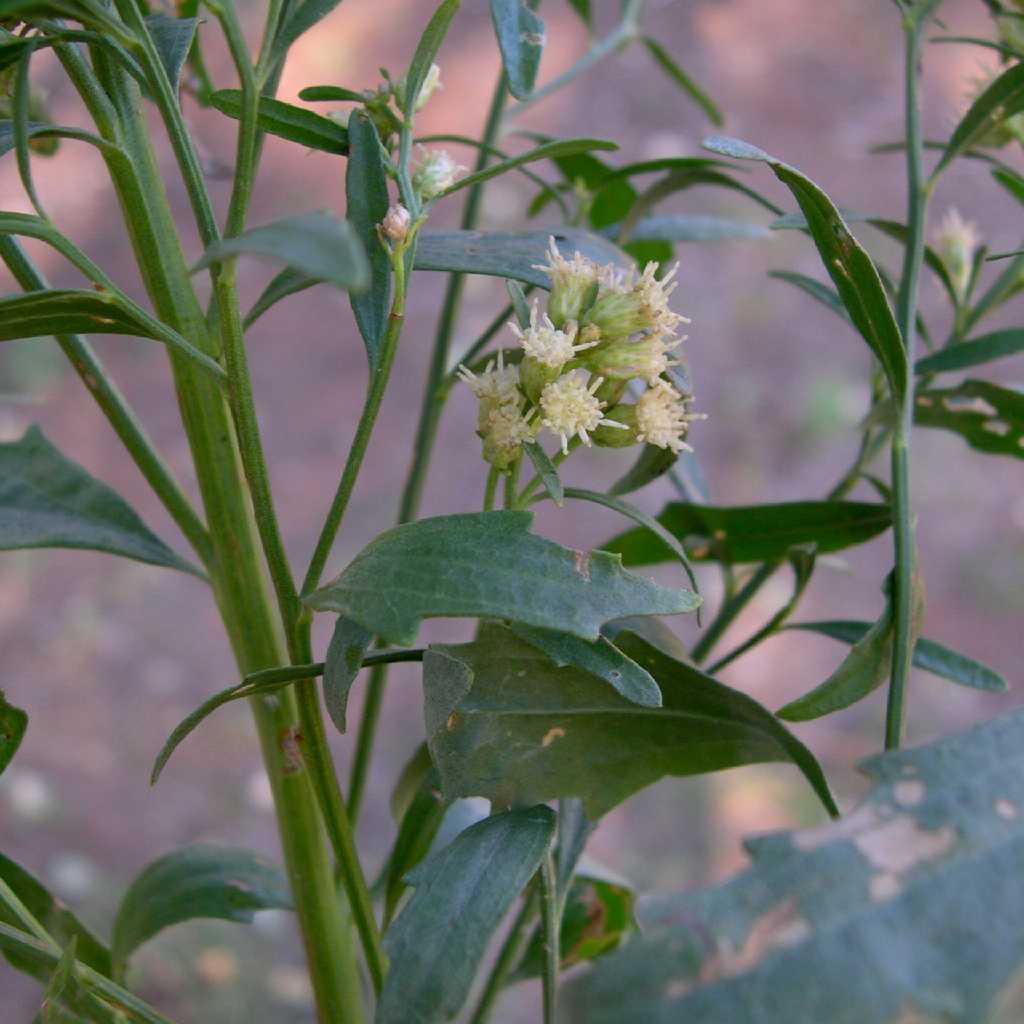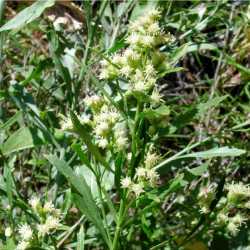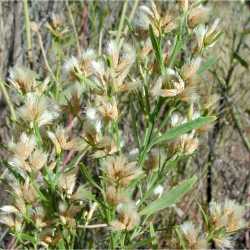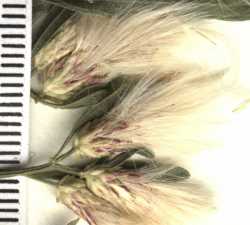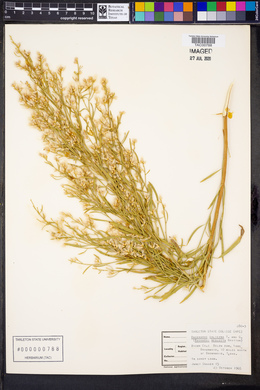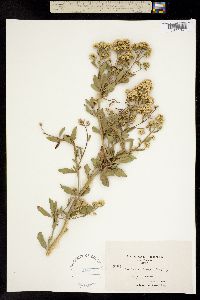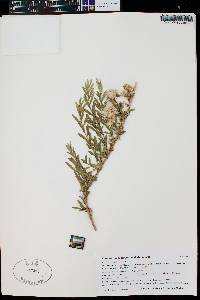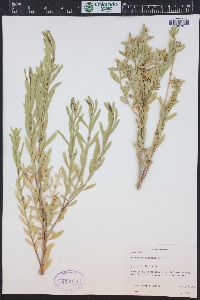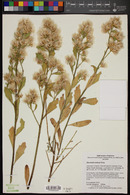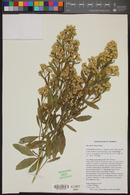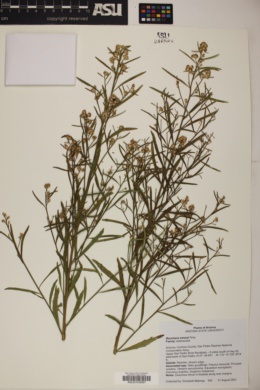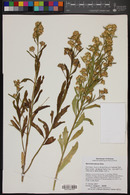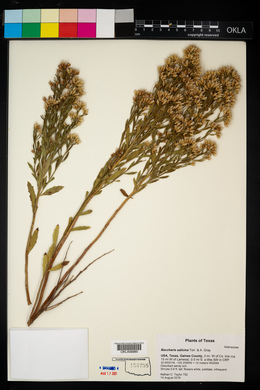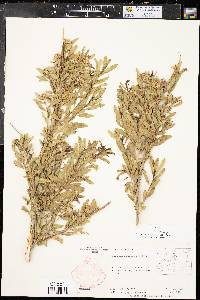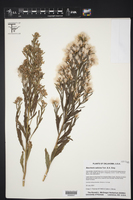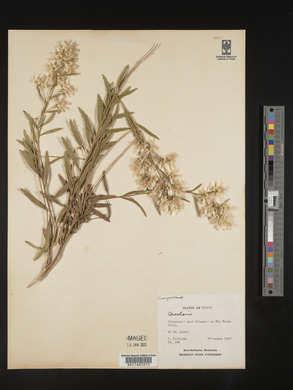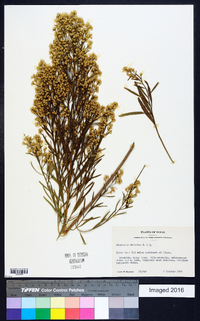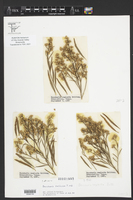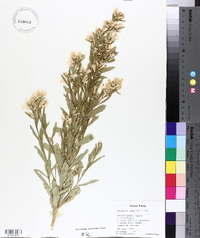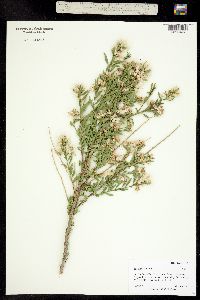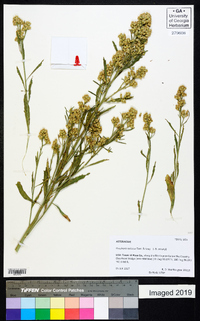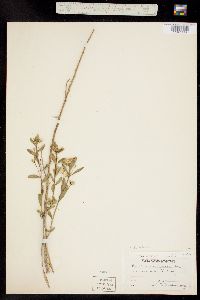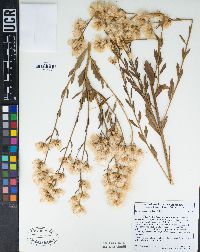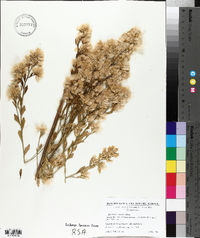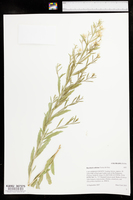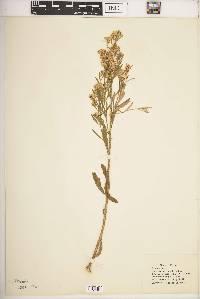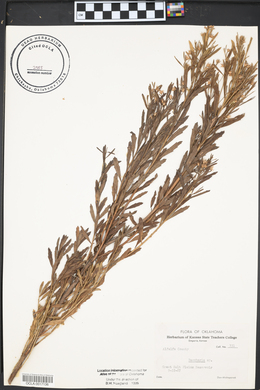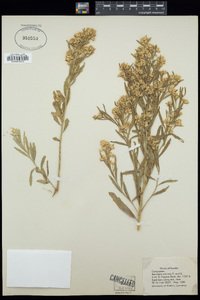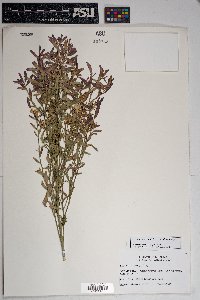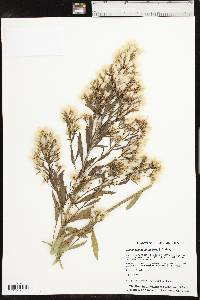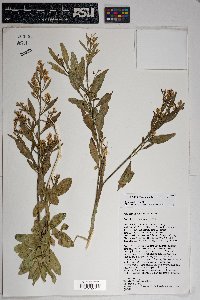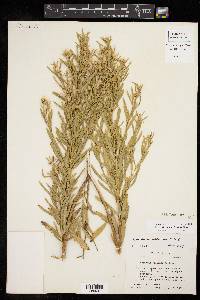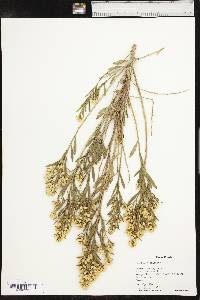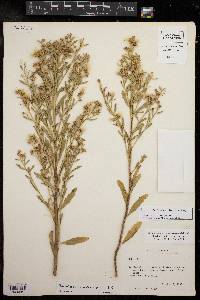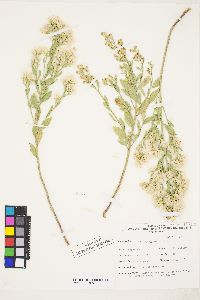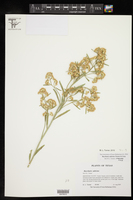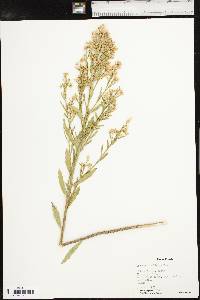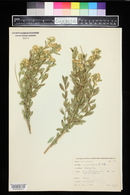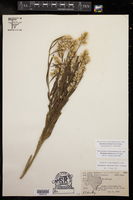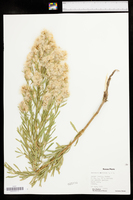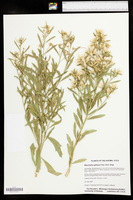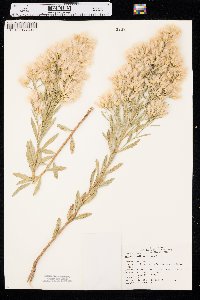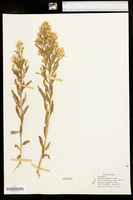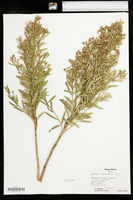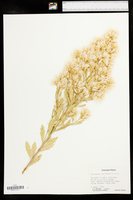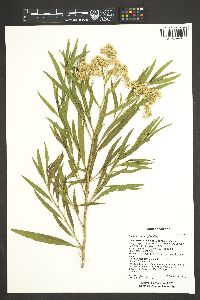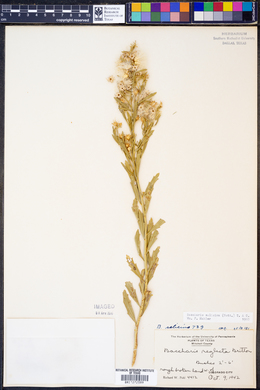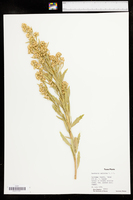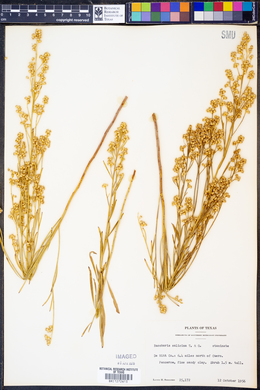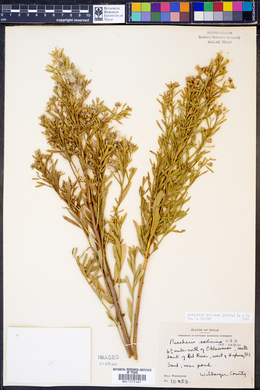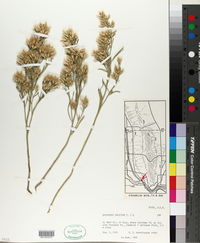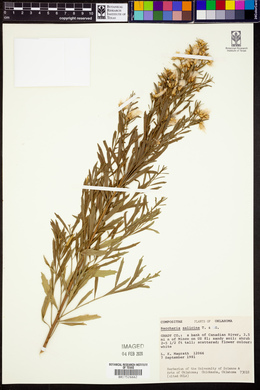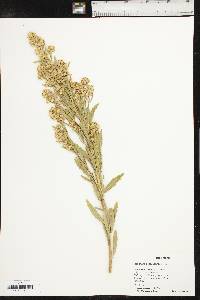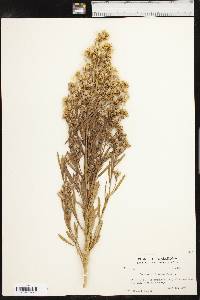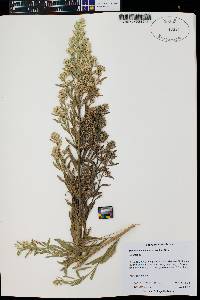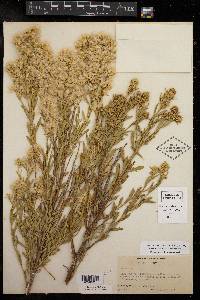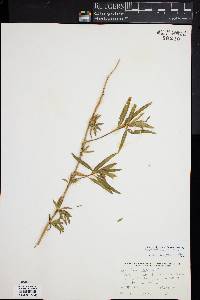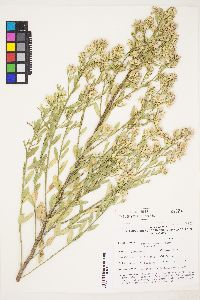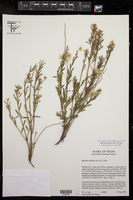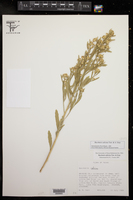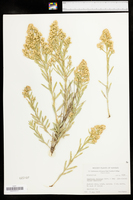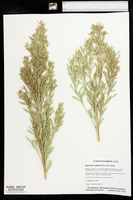
|
|
|
|
Family: Asteraceae
Emory's baccharis, more...Great Plains False Willow, Emory baccharis, willow baccharis
[Baccharis emoryi A. Gray] |
Shrubs, 100-300 cm (much branched). Stems ascending, striate-angled, glabrous, smooth or minutely roughened, resinous. Leaves present at flowering (numerous and well developed); short-petiolate; blades (at least broader distinctly 3-nerved) oblong to oblanceolate, 25-70 × 5-10(-20) mm, bases tapering attenuate, margins usually serrate distally (teeth 1-3, coarse irregular, ca. 5 mm apart), sometimes entire, apices acute or obtuse, faces finely gland-dotted. Heads (100-200+, short-pedunculate or sessile) in (large, crowded, leafy) paniculiform arrays. Involucres narrowly obconic to campanulate; staminate 4-7 mm, pistillate 5-9 mm. Phyllaries lanceolate , 2-6 mm, margins scarious, medians green or reddish, apices greenish or purplish, often erose-ciliate, faces glabrous, gland-dotted, resinous . Staminate florets 20-25; corollas 3-5 mm. Pistillate florets 25-30; corollas 3-4 mm. Cypselae 1.2-2 mm, irregularly 8-10-nerved, glabrous; pappi 8-12 mm (elongating in fruit). Flowering May-Nov. Stream banks, alkaline meadows, roadsides; 300-1600 m; Ariz., Calif., Colo., Kans., Nev., N.Mex., Okla., Tex., Utah; Mexico (Baja California, Chihuahua, Coahuila, Durango, Sonora). Baccharis salicina is recognized by its narrow, gland-dotted leaves with 1-3 irregular teeth on the distal half, heads in loose leafy arrays, campanulate involucres, and cypselae with 8-10 ribs. The recognition of Baccharis emoryi as a separate species in other floras has been based on its wider, glabrous, eglandular leaves, more cylindric pistillate involucres, and dense whitish pappi. It was said to occur both west of the Rocky Mountains and in western Texas. In our study, expressions of the characters used to distinguish B. emoryi from other species were found to be inconsistent and inadequate to warrant recognition as a distinct species. There appears to be a complex of up to four species-emoryi, salicina, neglecta and angustifolia-that intergrade from west to east. Characteristics progress from broader leaves and larger heads (emoryi form of salicina) to narrow leaves with small heads (neglecta, angustifolia). The delimitation of taxa within this complex merits further investigation.
Welsh et al 1993, Lyman and Benson 1981, Kearney and Peebles 1969, Wiggins 1964, FNA 2006, Heil et al 2013 Common Name: willow baccharis Duration: Perennial Nativity: Native Lifeform: Shrub Wetland Status: FACW General: Dioecious shrubs, 1-3 m tall, glabrous; branch architecture somewhat broom-like but more open; branches striate with 5 ridges or nerves; twigs green, strongly striate-angled. Leaves: Alternate and short-petiolate; blades oblong-elliptic to broadly oblanceolate, with a cuneate base, 1-9 cm long, up to 2 cm wide, with 3 moderately prominent veins; lower leaves coarsely few-toothed, uppermost leaves narrower, often entire. Flowers: Flower heads unisexual, discoid, solitary or in small glomerules at tips of branchlets; involucre (the ring of bracts surrounding the flower head) cone-shaped or bell-shaped, 4-9 mm tall, the bracts (phyllaries) gland-dotted, green or reddish, with scarious margins and green or purplish tips; florets all discs, 3-5 mm, with whitish (pistillate) to yellowish (staminate) corollas. Fruits: Achenes finely but distinctly ribbed, 1-2 mm, with a pappus of bristles 1 cm long, silky white or faintly tawny. Ecology: Found along arroyos and streams, usually in moist soil, from 500-5,000 ft (152-1524 m); flowers May-November. Distribution: CA and NV, east to KS, OK and TX; south to n MEX (Baja California, Chihuahua, Coahuila, Durango, Sonora). Notes: Baccharis is a genus of shrubs with male and female flowers on separate plants, gland-dotted leaves, all disc flowers, and a pappus of bristles on the seeds. B. salicina is characterized as a 2-3 m tall riparian shrub with numerous, well developed, persistent, lanceloate leaves. It is quite difficult to tell apart from B. salicifolia in the field. B. salicifolia is more willow-like and glutinous; the leaves have evenly and finely serrate margins; and the pappus on the achenes is shorter, 3-6 mm. B. salicina is also somewhat glutinous (sticky); the leaf margins are entire or have 1-4 pairs of teeth on the distal half or two-thirds; and the pappus on the achenes is longer (8-12 mm). Material without glands on the leaves has traditionally been called B. emoryi, but FNA does not recognize this taxon as a separate species, instead grouping it into B. salicina. Ethnobotany: Used in basketry, house construction, fuelwood, planting sticks, as a toy and a game. Etymology: Baccharis is named for Bacchus, the god of wine; salicina means willowlike, through reference to the genus Salix. Synonyms: Baccharis emoryi Editor: SBuckley 2010, AHazelton 2015 |

